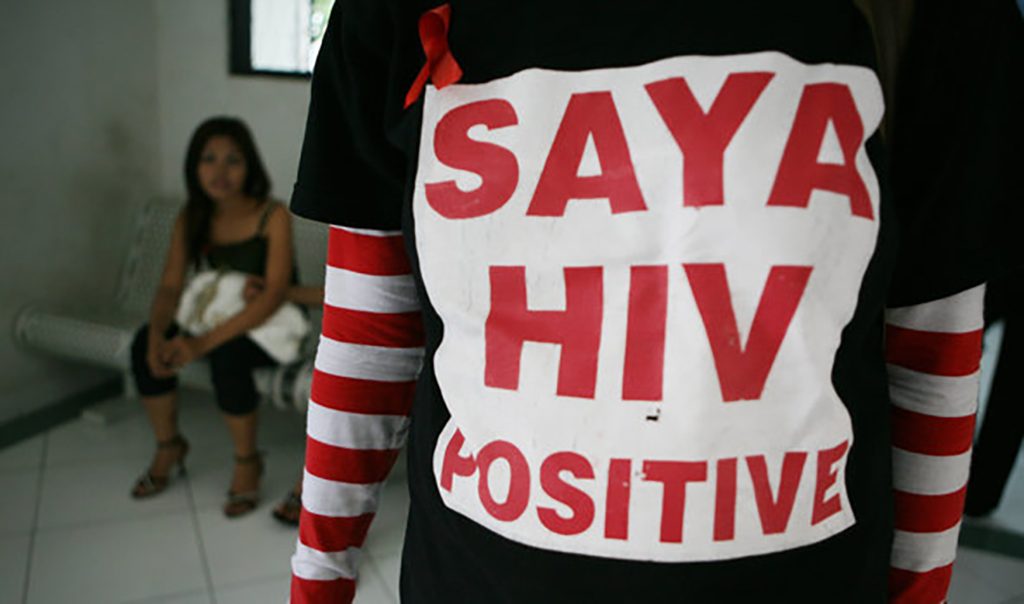New data shows the alarming spread of HIV and AIDS in Indonesia. The government must act quickly and decisively if it is to avert a new epidemic.
“We never had a medical check-up and don’t know how to avoid HIV/AIDS. The only thing we know is that we should use a condom. But often, they (customers) refuse to wear them.”
This is an excerpt from a conversation with a sex worker that one of us had a few years ago while working at a mining area in Indonesia.
It was a very emotional interview because many of the prostitute’s customers were employees of the mining company. It highlights the complexity of HIV/AIDS in Indonesia.
However, it would seem the majority of Indonesians have little, if any, idea about the dangers and the spread of HIV.
Recently, the Indonesian Ministry of Health released a shocking report that the number of people with HIV/AIDS in Indonesia had increased significantly.
At least 13,319 people have died as a result of HIV/AIDS over the past three decades, with the number of cases reaching 268,185. Currently, an estimated 690,000 people in the country are infected with HIV/AIDS. This figure makes Indonesia the country with the fastest growing HIV/AIDS rates in Southeast Asia.
What is worse is that currently, people with HIV/AIDS who recognise that they are infected comprise only 20 per cent of cases. In other words, eight out of 10 people do not know that they are infected with the virus. It can therefore be estimated that the actual number of HIV/AIDS cases is much greater than reported.
According to the data provided by the Ministry of Health, two main factors contribute to the spread of HIV/AIDS in Indonesia. The first is heterosexuals engaging in unsafe sex. This accounts for 46.2 per cent cases. In Indonesia, unprotected sex is caused by rampant sexual promiscuity and widespread prostitution.
The issue is further complicated because the prostitution industry in Indonesia also has a strong connection with poverty. The lack of knowledge concerning HIV/AIDS means sex workers are more vulnerable to contracting the virus.
The impacts of this issue are unfortunately not only suffered by commercial sex workers and their customers, but also endured by mothers, and even in some cases their unborn children, when their husbands use prostitution services. This can be seen in the province of North Sulawesi where the number of sex workers with HIV/AIDS is only about 5.4 per cent, while the vast majority of people with HIV/AIDS are homemakers.
Based on the data supplied by the Ministry of Health, the second factor contributing to the rising number of HIV/AIDS cases in Indonesia is man-to-man sexual intercourse (24.4 per cent of cases). Among these are included men are married to women, with some of them saying that they only want to have sex with other men as a way to experiment and explore.
The growth of social media has also made it easier to find sexual partners, and hence increase the risk of unprotected sex an the spread of HIV/AIDS.
With the massive spread of HIV/AIDS, the Indonesian government needs to exert serious efforts to tackle the problem, especially by formulating appropriate policy objectives.
Firstly, as much as possible, the government should increase knowledge among sex workers about the dangers of HIV/AIDS and how to avoid it. The more progressive step that can be taken is closing commercial sex areas, as achieved by the Mayor of Surabaya, Tri Rismaharini, who successfully shut down Gang Dolly, Southeast Asia’s largest red-light district.
This closure ensured that former sex workers were humanised and empowered. They were given training to improve their skills to acquire more decent employment, become more financially independent, and eventually escape their lives of poverty.
Another effort that needs to be made by the government is to control the widespread sex businesses around mining areas. This is particularly urgent when it is considered that there have been notable increases in HIV/AIDS cases in the areas surrounding mines, including the largest gold mine in Indonesia, Freeport in West Papua.
For example, Yayasan Peduli Aids (YPA), an organisation focusing on the spread of HIV/AIDS in Papua, has reported increased rates of HIV/AIDS in Papua, where an estimated number of 40,000 people have been infected.
Besides local solutions, subsequent efforts should be made within the LGBT community, and particularly among men who have sex with other men, as they represent the second biggest cases of the high rates of HIV in Indonesia.
This, however, is not an easy task given the fact that men who have sex with other men tend to be secret.
In addition, the increasing number of sexual relations among the LGBT community is inseparable from the growing campaigns in favour of LGBT rights in Indonesia, and calls for greater acceptance of this group.
Above all, it is clear that HIV/AIDS is a major issue that must be resolved in Indonesia. If not, the worst likelihood is an explosion in the number of HIV/AIDS cases in the country. With a population of 250 million people, Indonesia could potentially be the largest contributor to HIV/AIDS rates in the world.
Muhammad Zulfikar Rakhmat is a PhD scholar at the University of Manchester.
Media Wahyudi Askar is a PhD scholar at the University of Manchester and the President of Indonesian Student Association in the UK.
 Facebook
Facebook  Twitter
Twitter  Soundcloud
Soundcloud  Youtube
Youtube  Rss
Rss 